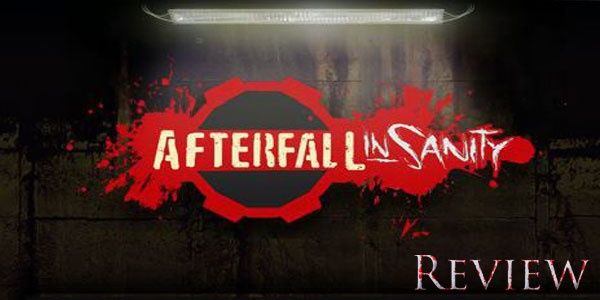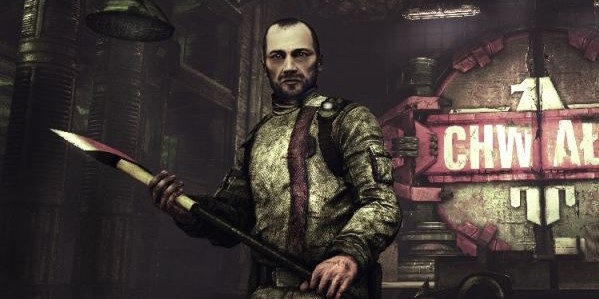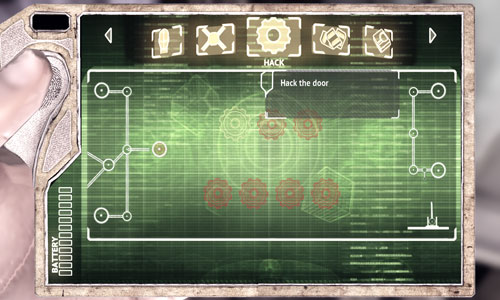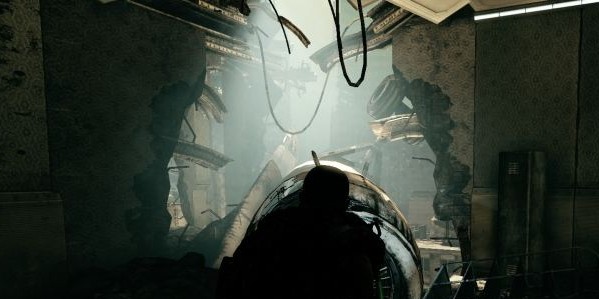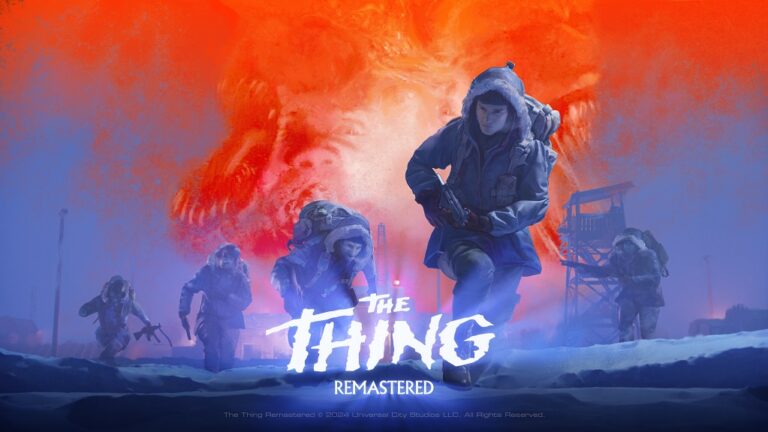I’ve got a bit of a confession to make; I almost gave up on Afterfall: Insanity. Even though I enjoyed playing through the demo and had pretty high hopes for it, technical issues caused me to lose far more time than I even care to admit on it. They were issues with my PC, and it’s nothing that you should be worried about, but it almost caused me to give up on this entire thing out of sheer frustration. Thanks where it’s due, to the staff for helping me through some of those issues!
Admittedly, after I played through the demo, I was pleased and hopeful for the full release, but I had a nagging doubt that it wasn’t going to live up to my expectations. Intoxicate Studios brings together young creators who have a real passion and dedication. These guys are an independent studio, and Afterfall was funded with help from Nicolas Entertainment Group, a small developer. Afterfall: Insanity is the first production on such a large scale, moving up from an amateur project to full-scale release. However just because Afterfall came from a small team, that doesn’t mean I’ve given it a free pass to suck– I’ve still run the game through its paces.
The year is 2035 – the privileged world has taken to underground shelters to escape the nuclear hellfire caused by World War III. Enough time has passed that the horror of the surface has faded into memory, with some Shelter residents too young to even remember what the surface is like, or having not experienced it at all. That bit exposition instantly reminded me of Fallout 3. “For on that day, the giant steel door of Vault 101 slid closed…and never re-opened. It was here you were born, it was here you will die. Because in Vault 101, no one ever enters. And no one ever leaves.”
In our hands-on article, I mentioned that it was clear where the inspiration for Afterfall came from. It’s stated even on their website that Afterfall is the product of a strong love for Fallout, and it shows. However in this universe, gone is relative cohesion between Vault residents and water shortages, all run by a benevolent…ish Overseer. In Afterfall is the very real, very damaging psychological disorder known as Confinement Syndrome, and the true viciousness of all those locked outside of the Shelters. You didn’t think they’d be okay with a whole generation of having to fight for survival, did you?
Confinement Syndrome is basically a mental disorder that afflicts people who have been in confined spaces for too long (who would have guessed, right?). How exactly this affects the everyday lives of people is really unknown but extreme cases are explained in game. The condition is such a bane to their existence that the shelter residents are routinely required to undergo psychological evaluation from the chief psychologist/pharmacologist, Dr. Tokaj (pronounced “toke-eye”) who incidentally is the protagonist of the game.
The best (or worst) thing about Confinement Syndrome? No one is completely immune, including the higher-ups. Each and every one of them meet with Dr. Tokaj on a regular basis, giving him an insider look into the mental health of the entire shelter. In doing so, there’s something that Tokaj has discovered about them and about himself – that friends are in short supply in Shelter Glory.
There’s not much introduction, save for a little bit of exposition as to set the scene and a quick cutscene to introduce us to Dr. Tokaj – developers decided to ditch the pomp and circumstance and cut right to the chase. Within three or four minutes of first loading up the game, you’re playing it. Unfortunately, things kind of slow down from there as the game takes you through a mandatory tutorial section, whether you need it or not. Even though the tutorials themselves are quick and seamless, the section itself is slow.
None of what Afterfall requires you to do is overly complicated, and that in itself is extremely refreshing. The controls are simple, you don’t have a million different commands to remember (I ran the game on PC) but the controls at times seemed a little unusual. For example your menu is ‘J’ and some prompts require you to use Enter instead of, perhaps a mouse-click. The dodge and run button are both the space-bar and sometimes the command wouldn’t read properly – I would just start running for no apparent reason, or would dodge and walk when I wanted to run. Not cool, but ultimately not a huge deal as it didn’t happen all that often. Seeing how the preview copy didn’t impress me with its inability to use custom key bindings, I decided to play with the default control scheme this time around.
The game lets you take in the atmosphere of the shelter during this first little section and it lets you get a real feel for the atmosphere. The main levels of the shelter are nice, clean and bright, but when Dr. Tokaj is required to travel to the 2nd Sublevel to investigate the strange behaviour of the Shelter Residents, shit gets real. This kind of atmosphere reflects the rest of the game – it’s dark, gritty, and undeniably creepy.
Oftentimes, people’s actions – the way they moved didn’t add up to what they were saying, causing a momentary lapse in immersion. This is a real shame, because the voice acting in Afterfall is actually not too bad. Aside from the VAing, I had a bit of an issue with the other audio on the game. Regardless of settings, the music in the background would overpower dialogue between characters. And while there are subtitles, having the music overpower the speech was a little annoying. It probably didn’t help that the subtitles could have used a spell-check as well. I understand completely that the studio is Polish, but Turning the dial down wouldn’t hurt any. Otherwise, the sound is great – it adds tonnes to the atmosphere of the game.
The combat, unfortunately, is still a pretty clunky affair. You can look at this in two ways: a) it sucks and there’s nothing that can be done about it b) adapt and consider it a method of keeping the tension up. Silent Hill 2 had a shitty combat system, but people still praise it. The combat isn’t broken by any means.
The game throws a whole mess of melee weapons at you, from the ever-present, all-powerful fire axe to brooms, wrenches and homemade maces. There’s a limited number of firearms available which suggests that the game wants you to go the melee route. The enemies aren’t really varied, but they offer their own unique set of challenges, and they all look really detailed. Even if they don’t make the best of noises.
 Tokaj makes notes on the enemies he encounters in his PDA. It’s interesting to note his personal opinion on some of them.
Tokaj makes notes on the enemies he encounters in his PDA. It’s interesting to note his personal opinion on some of them.
The difficulty of the enemies helps keep that same tension up as the non-fluid controls. Shelter enemies and guards are easy to overpower, but once you breach the Shelter walls and head outside on your own, you’ll find that friends are in short supply there, too. Be prepared for some pretty vicious encounters with the outsiders, ranging from your average savage wastelanders (damn Fallout lexicon) and cannibals to outright monsters, and strange apparitions that appear whenever you walk in sunlight. The apparitions I rather liked – alone, they’re easy to handle – one boss battle however threw dozens of them at me and I was left wondering why the game hated me so much. I ran around the battlefield on the verge of dying, spraying precious ammo everywhere to get them away from me. Tokaj screamed in pain – I screamed in panic and frustration. Everyone was screaming!
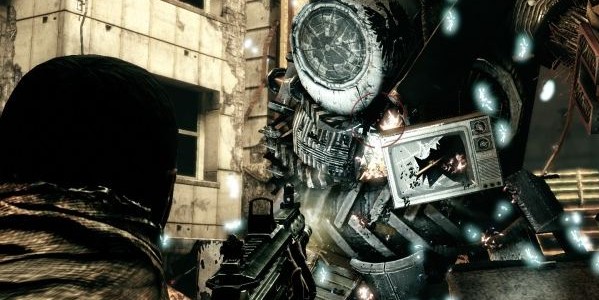
Even if you were in darkness, the light would trigger the apparitions to appear.
Afterfall’s story has some of the standard clichés found in horror games, but that’s not to say that it’s boring, even if it is easy to get a little bored in the initial stages. The initial stages of the game have a lot of puzzle elements, but not a lot of action. Even then, I felt that the puzzles could be a little more in-depth, add a little more challenge. The puzzles that exist are rather simple, sometimes random QTEs thrown out at you. The hacking mini-game to progress past locked doors is exactly that – random button presses. The puzzles seemed to peter out as the game wore on, instead of get harder.
As for the lasting impact of the story, I found myself wanting to play the game further to find out what happens to the characters. What caused the madness in the people on the Second Sublevel? Is it the Confinement Syndrome or something else? Why has the shelter turned against Tokaj when all he was trying to do was help them? There’s very little replay value here after the story is finished, unless you want to be a completionist, or have an affection for re-living the past.
While Afterfall might not have the most noteworthy story, where it excels tremendously is in atmosphere. The different areas of the Shelter, The City of Dark and the City of Lights are beautifully rendered, if not a little straightforward. And unlike in the Fallout universe, the people here are vicious. They hate you and everything about you – they come at you with sickles and maces, hammers and guns upon sight. You want to stay hidden or run away, but it just doesn’t work that way.
The City of Lights – described as a pale skeleton of a once-great metropolis is possibly the most eerie place of all. It does what Resident Evil 5 failed to do – make daylight an effective setting in horror. How? Tokaj has spent nearly his entire life in a shelter with artificial light. When he takes his first steps outside, sunlight is an enemy. Step into the sunlight (which is EVERY-FRIGGING-WHERE) and strange apparitions appear and you can’t see for a few moments. Stay too long in the sunlight and you’ll just die.
In one instance, I was making my way through a dilapidated shopping mall. The scenery was littered with charred remains of human beings as if they were frozen in time. I expected them to be dead – I should have known better. So when one of those things came to life and started running at me, screaming in agony, it was a surprise. There was another instance where I was required to go through a room – I can’t quite remember what for, but it would have been completely unremarkable were it not for the sound of incomprehensible whispering, growing louder and louder in intensity. This happens at several locations in the game, and even something as innocuous as whispers in the dark can be extremely effective.
This caused Tokaj’s Fear Lock to set in, blurring vision and making ensuing battles rather difficult and all the more frightening. Fear Lock It adds an authentic edge to his character – going from someone who is cool and collected, to someone whose losing their mind. There were instances where ‘I’ jumped or was weirded out, but Tokaj didn’t flinch. Corpses flung about, weird mutations happening to people he once knew – what a heartless bastard! Fear Lock (a result of seeing too many traumatic or frightening events) unfortunately is something I wished I would have seen a little more of, because it’s a great tool for creating tension.
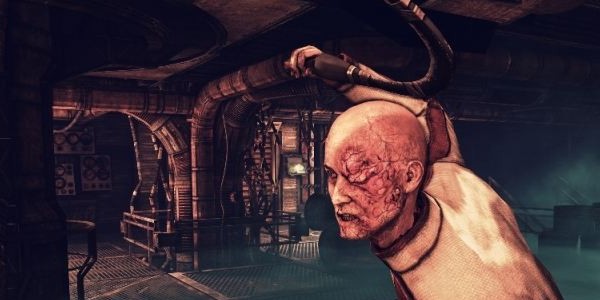 No wonder everybody wants to gouge his eyes out.
No wonder everybody wants to gouge his eyes out.
So I’m faced with a bit of a dilemma now. There might be a bit of an issue with my final score, which is why I’m explaining this here. I know that I can’t grade Afterfall on the same scale as I would grade a game coming from a heavy-hitter like Capcom or Konami, with millions more in capital. It’s hard not to as well, considering that – as a gamer, you’ve only got so many dollars and time to spend with a game and you want the best bang for your buck. On that same token, I can’t inflate the score to more because it’s not from a heavy-hitter like Capcom or Konami.
Seeing as how the Pre-Order for a $1 didn’t pan over well with its prospective audience, $35 isn’t a bad for the kind of experience that Afterfall: Insanity gives you. It was enjoyable with a nicely sized campaign, but little replay value. It was extremely atmospheric, and kept me on the edge of my seat for the duration. The character interaction speech-wise, and their motivation seemed authentic, and despite a couple of shortcomings, the whole thing was wrapped up in a beautiful-looking package.

 trivard676
trivard676